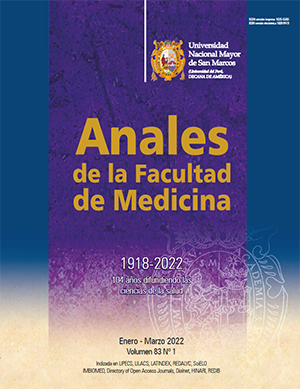Perception and disposition to digital rectal examination in the prevention of prostate cancer
DOI:
https://doi.org/10.15381/anales.v83i1.20779Keywords:
Disease Prevention, Prostatic Neoplasms, Perception, Patient Acceptance of Health Care, Digital Rectal ExaminationAbstract
Introduction. Prostate cancer can be detected by digital rectal examination. Objectives. To explore the perception and disposition to digital rectal examination. Methods. A qualitative study was carried out. The unit of analysis was the patient who comes to the service’s outpatient consultation. An in-depth interview was used. Results. The perception of digital rectal examination has as a priori categories that are machismo, homosexuality, shame, pain and sexual impotence. The emerging category was predisposition to digital rectal examination in the urology service, predisposition due to the benefit of performing digital rectal examination, and predisposition of patients who had already undergone digital rectal examination. Conclusions. The perception has emerging categories such as the predisposition to digital rectal examination in patients of the urology service, predisposition of patients who had a previous consultation. The willingness to digital rectal examination is accepted by patients as it is a medical indication performed by a trained professional.
Downloads
Published
Issue
Section
License
Copyright (c) 2022 Anales de la Facultad de Medicina

This work is licensed under a Creative Commons Attribution-NonCommercial-ShareAlike 4.0 International License.
Those authors who have publications with this magazine accept the following terms:
- Authors will retain their copyrights and guarantee the journal the right of first publication of their work, which will be simultaneously subject to Creative Commons Attribution License that allows third parties to share the work as long as its author and its first publication this magazine are indicated.
- Authors may adopt other non-exclusive licensing agreements for the distribution of the version of the published work (eg, deposit it in an institutional electronic file or publish it in a monographic volume) provided that the initial publication in this magazine is indicated.
- Authors are allowed and recommended to disseminate their work over the Internet (eg: in institutional telematic archives or on their website) before and during the submission process, which It can produce interesting exchanges and increase quotes from the published work. (See El efecto del acceso abierto ).



